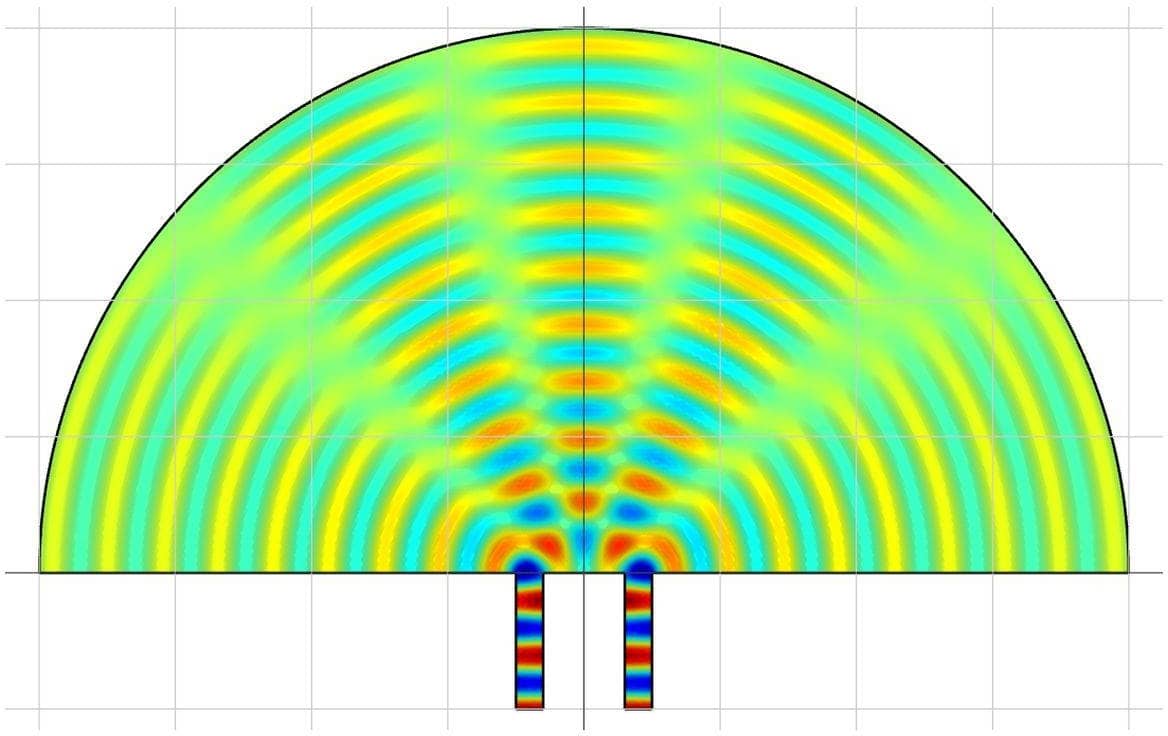The classic double-slit experiment considers a planar and periodic oscillating wave which hits and passes two narrow slits. Assuming the slits are narrow enough, the passing waves will bend and cause an interference pattern, while diffraction will attenuate the off axis resulting amplitude.
In the example the Helmholtz equation is used to model the wave phenomena
$$ -( \frac{\partial^2 A}{\partial x^2} + \frac{\partial^2 A}{\partial y^2} ) - k^2 A = 0 $$
where A is the amplitude of the wave,and k the wave number (k = 2·π/λ).
This model is available as an automated tutorial by selecting Model Examples and Tutorials… > Classic PDE > Interference and Diffraction from the File menu, viewed as a video tutorial below. Or alternatively, follow the linked step-by-step instructions.
